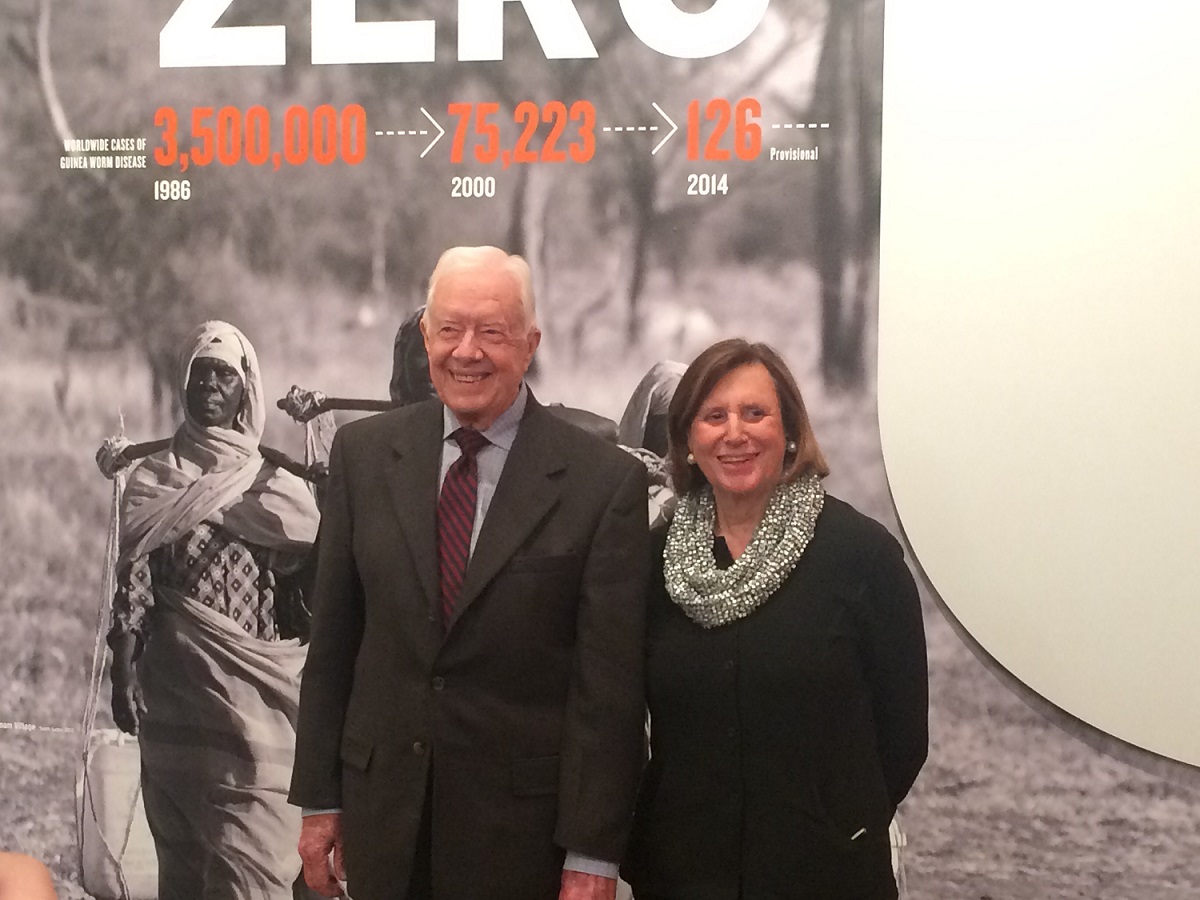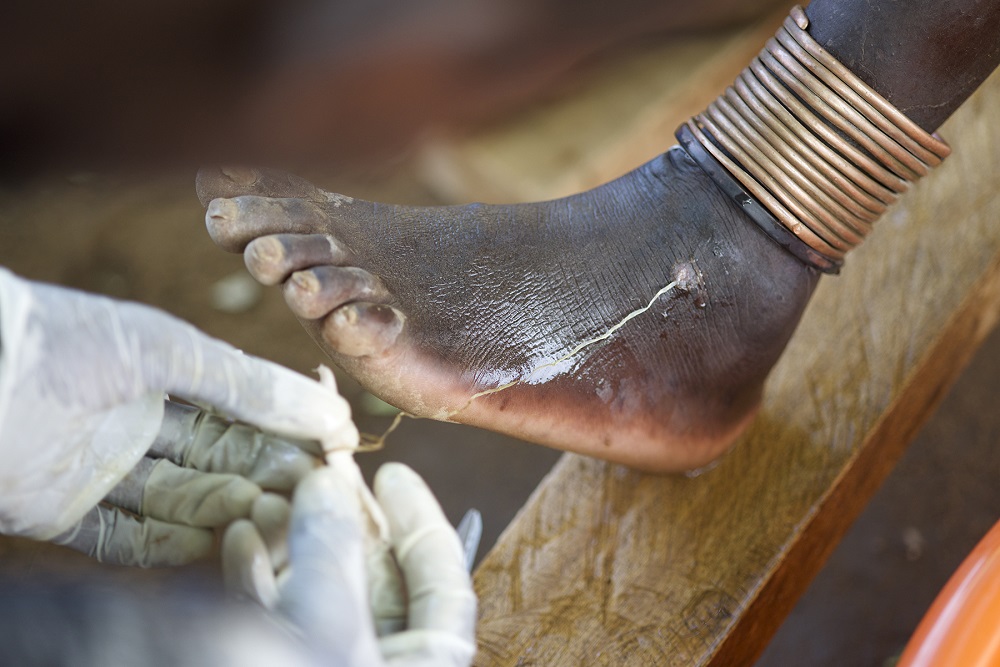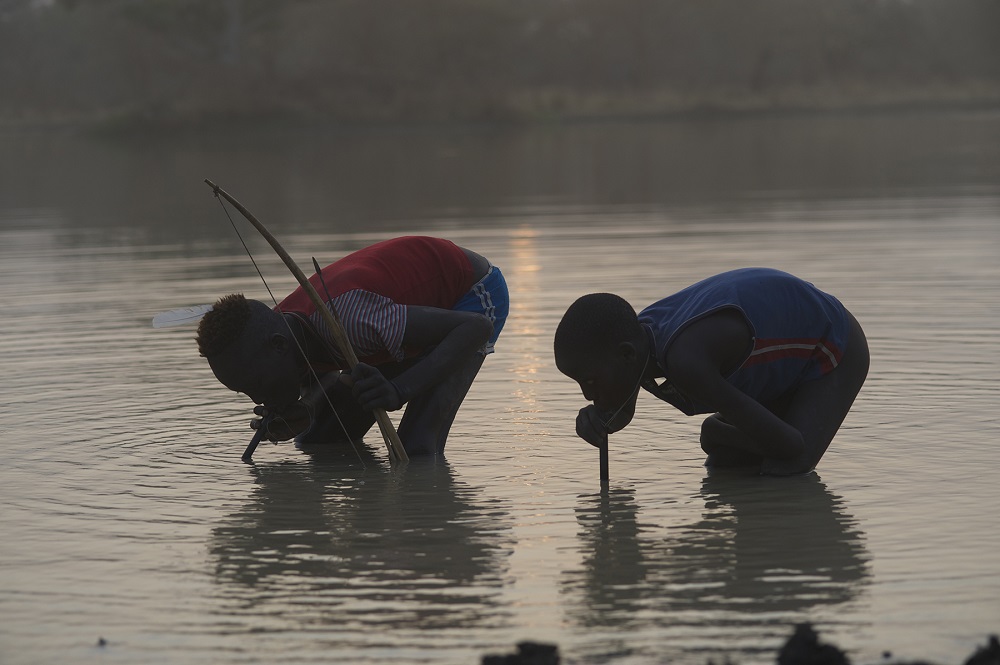Jimmy Carter's Work to Defeat Guinea Worm Highlighted in New Exhibit

NEW YORK — A new museum exhibit will showcase the massive public health effort it took to beat the grisly parasitic infection called Guinea worm disease, and former U.S. President Jimmy Carter was here today at a preview of the exhibit's opening.
"The number of cases of Guinea worm disease continued decreasing in 2014, bringing Guinea worm eradication closer to the finish line," said Carter, whose organization, The Carter Center, has focused on fighting this waterborne disease since 1986 and helped develop the new exhibit.
Guinea worm disease struck about 3.5 million people worldwide every year in the 1980s. That number was down to 126 cases in 2014, raising hopes that the debilitating disease may soon become a page in history.
The route to wiping out the Guinea worm disease is displayed in the exhibit "Countdown to Zero: Defeating Disease," which will open on Tuesday (Jan. 13) at the American Museum of Natural History (AMNH) in New York. [The 9 Deadliest Viruses on Earth]
Guinea worm disease was once common in many African and Asian countries. People become infected with the illness by drinking water contaminated with the parasite's larvae. The larvae penetrate a person's digestive track and remain in the body, growing over the course of a year into worms that can be 2 to 3 feet (60 to 100 centimeters) long. The adult worms then break the infected person's skin and create an extremely painful blister, from which the worms slowly crawl out of the individual's body over about 30 days. The disease is rarely fatal, but the pain it causes is debilitating, and the worm can also leave permanent tissue damage, resulting in disability.
Educating people about contaminated water and providing simple water filters has reduced the transmission of Guinea worm disease. In 2014, only 30 villages in Africa had cases of Guinea worm disease, down from nearly 24,000 villages in 1991, according to the Carter Center. The affected villages were in South Sudan, along with isolated areas of Chad, Mali and Ethiopia.
"We know everybody who has Guinea worms. We know the villages where they live, and we have them isolated so they can't spread the disease," Carter told the audience at a preview of the new exhibition at the AMNH. "We hope that in the next few years we have zero Guinea worms in the world."
Get the world’s most fascinating discoveries delivered straight to your inbox.
Zero cases of Guinea worm disease, if achieved, would make it the second human disease ever eradicated, after smallpox. Once one of the deadliest diseases in the world, smallpox was wiped out by 1980, thanks to widespread vaccination led by the World Health Organization.
The exhibit also highlights ongoing programs to eradicate other diseases. Polio, for example, has been eliminated in most regions of the world, but total eradication of the disease depends on ongoing efforts in the last remaining countries where cases occur. Other diseases included in the exhibit are river blindness andlymphatic filariasis, both caused by parasitic worms, and malaria.
To protect themselves against Guinea worm, people in endemic regions are taught to filter their water to remove tiny organisms that carry Guinea worm larvae. This interrupts the worm's life cycle. Filters are made in the shape of a pipe, so people can wear them around their necks and use as straws to filter drinking water.
The story of Guinea worm elimination shows how engaging people respectfully is important in combating a disease, said Donald Hopkins, Carter Center vice president for health programs.
"The challenge is more with people than the worms. You have to help people in the villages understand that it is possible to stop suffering from this disease," Hopkins said.
Email Bahar Gholipour. Follow Live Science @livescience, Facebook & Google+. Originally published on Live Science.





